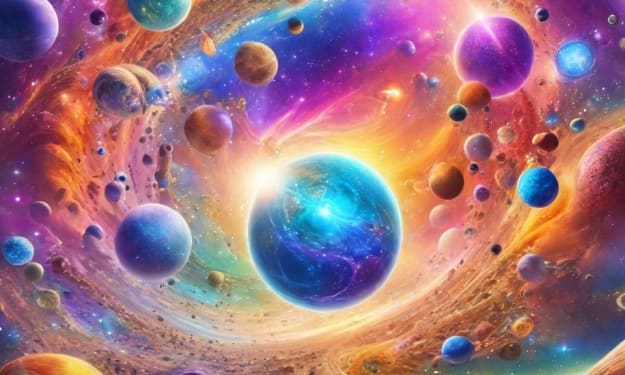The Legend of Mermaids: Exploring Myths and Cultural Significance Across the World
The ocean remains

For centuries, the captivating image of the mermaid – a creature with the head and torso of a human and the tail of a fish – has captured imaginations across the globe. These alluring beings have transcended cultures and time periods, evolving from mythological warnings to enchanting symbols of beauty and mystery. This article delves into the rich tapestry of mermaid legends, exploring their origins, cultural significance, and enduring legacy.
Unveiling the Origins: A Global Splash
Pinpointing the exact origin of the mermaid myth is no easy feat. Stories of human-fish hybrids appear in various ancient civilizations, each offering a unique perspective. Here are some of the earliest examples:
Mesopotamia (5000 BC): Oannes, a fish-god credited with bringing knowledge and civilization to humanity, emerges from the waters in Mesopotamian mythology.
Syria (1000 BC): The legend of Atargatis, a fertility goddess who transforms into a mermaid after a tragic love affair, offers a glimpse into early Syrian mythology.
Greece (800 BC): While not strictly mermaids, the seductive Sirens of Greek myth lured sailors to their deaths with their enchanting songs. These beautiful yet dangerous creatures may have laid the groundwork for later mermaid portrayals.
Beyond these early examples, mermaid myths extend far and wide:
Japan: Amabie, a benevolent mermaid said to bring prosperity, and the mischievous Kappa, a turtle-like water spirit, populate Japanese folklore.
China: The Jiaoren, a fish-like creature with a human face, and the Hai Nü, beautiful and benevolent water spirits, hold a place in Chinese mythology.
Europe: Throughout European folklore, mermaids take on a more menacing role, often luring sailors to their deaths or symbolizing the dangers of the sea. However, tales of benevolent mermaids also exist, such as Hans Christian Andersen's iconic "The Little Mermaid."
These are just a few examples, showcasing the universality of the mermaid myth. The vastness of the ocean, its hidden depths, and the power it wields have always inspired both wonder and fear. Mermaids, with their dual nature, bridge the gap between the familiar human world and the unknown aquatic realm.
Beyond Beauty: The Symbolic Power of Mermaids
The image of the mermaid transcends mere physical beauty. Across cultures, these mythical creatures have been imbued with various symbolic meanings:
Fertility and Creation: In some cultures, mermaids are associated with fertility and the life-giving power of the sea. Their connection to both the land and the water reinforces this symbolism.
Danger and Allure: The ocean's beauty can be deceptive, and mermaids often represent the potential dangers lurking beneath the surface. Their alluring appearance can mask a treacherous nature, a cautionary tale for those who venture too close.
Transformation and Change: The mermaid embodies transformation, existing between two worlds. This fluidity can symbolize personal growth, metamorphosis, and the journey of self-discovery.
Unfulfilled Desires and Longing: The mermaid's yearning for the human world, often portrayed in myths, reflects our own unfulfilled desires and the longing for something beyond our grasp.
These symbolic interpretations add depth and complexity to the mermaid myth, making these creatures more than just beautiful beings from folklore.
The Evolution of the Mermaid: From Myth to Modernity
The mermaid myth has undergone a fascinating transformation throughout history.
Medieval Period: During this time, mermaids were often depicted as menacing creatures, luring sailors to their doom.
Renaissance: The Renaissance saw a shift towards a more romanticized view of mermaids, with an emphasis on their beauty and grace.
19th Century: Hans Christian Andersen's "The Little Mermaid" solidified the modern image of the mermaid as a beautiful young woman yearning for a life on land. This enduring tale continues to shape our perception of these creatures.
Modern Interpretations: Today, mermaids remain popular in popular culture, appearing in everything from children's stories to fantasy novels and movies. Modern portrayals often explore themes of environmentalism, self-acceptance, and the power of female agency.
The evolution of the mermaid myth reflects changing cultural values and anxieties. From cautionary tales to symbols of empowerment, these captivating creatures continue to resonate with us.
The Enduring Allure: Why Mermaids Still Matter
The mermaid myth persists for a reason. Here's why these captivating creatures continue to capture our imagination:
Connection to the Ocean: The ocean remains a vast and mysterious place, and mermaids act as a bridge between the familiar and the unknown. They allow us to explore our fascination with the deep and the creatures that inhabit it.
Universal Themes: The core themes associated with mermaids – transformation
About the Creator
Moharif Yulianto
a freelance writer and thesis preparation in his country, youtube content creator, facebook
Enjoyed the story? Support the Creator.
Subscribe for free to receive all their stories in your feed. You could also pledge your support or give them a one-off tip, letting them know you appreciate their work.






Comments
There are no comments for this story
Be the first to respond and start the conversation.